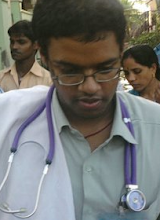A lot of studies on whether to drink or not to drink alcohol. And if to drink how much. what is the accepted level. It is a well known fact that alcohol intake causes liver cirrhosis. It is also a well noted risk factor for a number of conditions like hypertension, cardiovascular problems etc.
Not only does it cause health problems, it also adversely affects relationships and your work or your home life.
Alcoholic beverages has been consumed by humans since prehistoric times for a variety of hygienic, dietary, medicinal, religious, and recreational reasons. The consumption of large doses of ethanol causes drunkenness(intoxication), which may lead to a hangover as its effects wear off.
Short-term effects of alcohol consumption include intoxication, dehydration, and ultimately alcohol poisoning. Long-term effects of alcohol include changes to metabolism in the liver and brain, and possible addiction (alcoholism)
Alcoholism, also known as alcohol dependence,is a disabling addictive disorder. It is characterized by compulsive and uncontrolled consumption of alcohol despite its negative effects on the drinker's health, relationships, and social standing.
Long term alcohol abuse can cause a number of physical symptoms, including cirrhosis of the liver,pancreatitis, epilepsy,polyneuropathy, alcoholic dementia, heart disease, nutritional deficiencies, and sexual dysfunction, and can eventually be fatal.
The American Academy of Family Physicians says warning signs of problem drinking may include:
Not only does it cause health problems, it also adversely affects relationships and your work or your home life.
Alcoholic beverages has been consumed by humans since prehistoric times for a variety of hygienic, dietary, medicinal, religious, and recreational reasons. The consumption of large doses of ethanol causes drunkenness(intoxication), which may lead to a hangover as its effects wear off.
Short-term effects of alcohol consumption include intoxication, dehydration, and ultimately alcohol poisoning. Long-term effects of alcohol include changes to metabolism in the liver and brain, and possible addiction (alcoholism)
Alcoholism, also known as alcohol dependence,is a disabling addictive disorder. It is characterized by compulsive and uncontrolled consumption of alcohol despite its negative effects on the drinker's health, relationships, and social standing.
Long term alcohol abuse can cause a number of physical symptoms, including cirrhosis of the liver,pancreatitis, epilepsy,polyneuropathy, alcoholic dementia, heart disease, nutritional deficiencies, and sexual dysfunction, and can eventually be fatal.
The American Academy of Family Physicians says warning signs of problem drinking may include:
- Driving after drinking,
- Feeling anxious, depressed or suspicious.
- Having problems with relationships that appear alcohol-related.
- Developing problems with self-esteem and generally taking poor care of yourself.
- Having difficulty sleeping, or finding it difficult to keep up at work.
- Noticing that your hands are trembling.
- Missing work due to being hung over.
- Blacking out or experiencing memory loss.










_-_en.svg.png)





 ople in Bhubaneswar, Cuttack, Berhampur, Sambalpur, Rourkela, Burla and other parts of the state are in a state of panic. Most people are seen wearing masks to prevent Swine Flu. They also throng to various hospitals to get vaccines and tablets, which are not easily available because of high demand.
ople in Bhubaneswar, Cuttack, Berhampur, Sambalpur, Rourkela, Burla and other parts of the state are in a state of panic. Most people are seen wearing masks to prevent Swine Flu. They also throng to various hospitals to get vaccines and tablets, which are not easily available because of high demand.











Join The Community